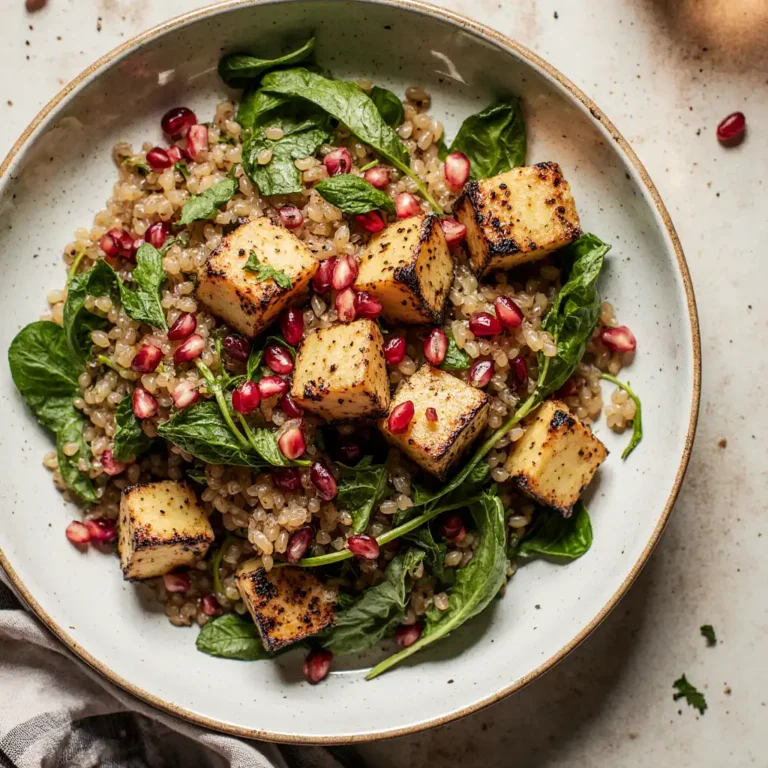Creamiest Cauliflower Soup Recipe – Healthy & Easy Delight

The Creamiest Cauliflower Soup (No Cream Added): Discover the Secret to Silky Smoothness
Have you ever wondered how to make a soup that’s irresistibly creamy without adding any heavy cream or dairy? Many home cooks shy away from cauliflower soup because they think it will turn out watery or bland without cream. But what if I told you that you could enjoy the creamiest cauliflower soup without a single drop of cream? This recipe breaks the misconception that creaminess equals dairy and uses simple, wholesome ingredients to deliver a velvety texture that even your pickiest eaters will love.
Whether you’re seeking a comforting dish that’s light on calories or need a dairy-free bowl of warmth, this cauliflower soup will quickly become your go-to. Let’s dive into making this luscious, healthy, and totally satisfying cauliflower soup that boasts both rich flavor and nourishing goodness.
Ingredients List
Creating luxuriously smooth cauliflower soup starts with the right staples. Here’s everything you’ll need to get started, along with some handy substitutions and dietary alternatives:
- 1 large head of cauliflower (about 1.5 pounds), chopped into florets
- 1 medium yellow onion, diced (substitute with shallots for milder flavor)
- 3 cloves garlic, minced
- 3 cups vegetable broth (or chicken broth for non-vegetarians)
- 1 medium potato, peeled and diced (adds natural creaminess, can swap with parsnip)
- 2 tablespoons olive oil (or avocado oil for higher smoke point)
- 1 teaspoon dried thyme (fresh thyme works too)
- 1 bay leaf
- Salt and freshly ground black pepper, to taste
- Optional toppings: chopped chives, a sprinkle of nutritional yeast, roasted pumpkin seeds
Dietary Alternatives:
- For a Whole30 or paleo-friendly version, ensure your broth is compliant and skip any garnish that isn’t approved.
- To keep it low FODMAP, reduce or omit onion and garlic, substituting with green tops of scallions or asafoetida powder.
Timing
This recipe is a perfect weekday dinner option when you crave something cozy yet quick. Here’s the time breakdown:
- Prep time: 15 minutes — chopping the cauliflower, onion, and potato, and prepping your broth.
- Cook time: 25-30 minutes — simmering until the vegetables are tender and blending is smooth.
- Total time: Around 40-45 minutes — enough for a satisfying meal that fits a busy schedule.
The aroma of sautéed onions and garlic filling your kitchen while the cauliflower softens will have your senses tingling with anticipation.
Step-by-Step Instructions
Step 1: Sauté Aromatics for Depth of Flavor
In a large pot, heat olive oil over medium heat. Add diced onion and cook until translucent, about 5 minutes. Stir in minced garlic and cook for another 1-2 minutes until fragrant, being careful not to burn it. The sweet, savory smell at this stage forms the flavor base for your soup.
Chef’s tip: Use a wooden spoon—metal can sometimes discolor your pot when cooking at higher heat!
Step 2: Add Cauliflower, Potato, and Herbs
Toss in the cauliflower florets, diced potato, dried thyme, and bay leaf. Stir everything to coat the vegetables in the aromatic oil. Let them mingle for a minute so the flavors start to meld.
Step 3: Pour in Broth and Simmer
Pour vegetable broth over the mix, bringing the liquid to a gentle boil before reducing heat to a simmer. Cover loosely and cook for about 20-25 minutes, or until the cauliflower and potatoes are tender enough to pierce with a fork.
Pro tip: Save a little broth for adjusting consistency later — you want your soup creamy, not watery.
Step 4: Blend Until Silky Smooth
Remove the bay leaf. Using an immersion blender, process the soup directly in the pot until perfectly smooth and creamy. Alternatively, carefully transfer batches to a blender. For an extra luxurious texture, blend for an extra 30 seconds.
Chef’s tip: If you want an even creamier consistency, stir in a splash of unsweetened almond milk or coconut milk at this point.
Step 5: Season and Serve
Taste and season with salt and black pepper. Serve hot, garnished with chopped chives, a sprinkle of nutritional yeast, or your favorite crunchy topping like toasted pumpkin seeds.
Nutritional Information
Here’s a quick snapshot of the nutritional benefits per serving (makes approximately 4 servings):
- Calories: 150-180
- Protein: 5g
- Fat: 7g (mostly healthy fats from olive oil)
- Carbohydrates: 18g
- Fiber: 5g
- Vitamin C: ~70% Daily Value
- Vitamin K: Significant contribution
- Potassium: High — great for heart health
- Sugar: Low, naturally occurring from vegetables
This soup offers a nutrient-rich, low-calorie meal option that supports digestion, immunity, and overall wellness.
Healthier Alternatives
Looking to boost the nutritional profile? Try these swaps without compromising creaminess:
- Use cauliflower rice blended with broth for a lighter texture.
- Replace potato with cauliflower stems to reduce carbs.
- Swap olive oil for avocado oil for higher monounsaturated fat content.
- Add a handful of spinach or kale in the last five minutes for extra greens.
- Stir in a tablespoon of ground flaxseed for omega-3 fatty acids.
These tweaks add vitamins, minerals, and heart-healthy fats while keeping the soup light and creamy.
Serving Suggestions
Elevate your bowl with these delicious pairing ideas:
- Pair with a slice of crusty whole grain bread or homemade garlic bread for dipping.
- Top with crispy bacon bits or a drizzle of truffle oil for an indulgent touch.
- Serve alongside a fresh arugula salad dressed with lemon vinaigrette for a bright contrast.
- For a seasonal twist, swirl in roasted pumpkin purée or top with sautéed wild mushrooms.
Feel free to mix and match based on what’s in your pantry or the seasonality of your ingredients.
Common Mistakes to Avoid
- Skipping the potato or another starch — without this natural thickener, the soup might not achieve that ultra-creamy texture.
- Overcooking cauliflower — leads to a mushy soup with a strong sulfur taste. Cook just until tender.
- Not seasoning properly — cauliflower can be bland without enough salt and pepper; don’t forget to taste as you go.
- Blending in cold soup — warm soup blends more smoothly and evenly. Cool soup may turn grainy or separate.
Avoid these pitfalls, and your soup will turn out perfectly every time.
Storing Tips
- Allow the soup to cool completely before transferring to airtight containers.
- Store in the refrigerator for up to 3-4 days.
- To reheat, warm gently on the stove or microwave, stirring occasionally to maintain smooth texture.
- For longer storage, freeze the soup in portion-sized containers for up to 3 months. Thaw overnight in the fridge before reheating.
Pro tip: When freezing, leave some space at the top of your container as the soup will expand slightly.
Conclusion
Transforming simple cauliflower into a creamy, comforting soup without cream is easier than you think. Using natural ingredients and smart cooking techniques unlocks maximum flavor and texture while keeping it wholesome. Try this recipe today and savor every nourishing spoonful!
If you enjoyed this post, please leave a comment below, share your variations, or subscribe to the newsletter for more delicious and healthy recipes.
FAQs
Q1: Can I make this soup in a slow cooker?
Absolutely! Sauté onion and garlic on the stove first, then transfer all ingredients to a slow cooker. Cook on low for 4-5 hours or high for 2-3 hours before blending.
Q2: How can I make this soup vegan-friendly?
Simply use vegetable broth and skip any dairy toppings. Nutritional yeast is a great vegan-friendly “cheesy” finish.
Q3: Is cauliflower soup good for weight loss?
Yes! It’s low in calories but high in fiber and nutrients, making it a filling, nutritious meal option for weight management.
Q4: Can I add cheese without cream?
Sure! Stir in grated Parmesan or a hard cheese for flavor without creaminess impacting dairy content too much.
Q5: What texture should I aim for?
The ideal soup is silky smooth and thick enough to coat the back of a spoon without being heavy—think rich but light.
For more nourishing recipes like this, check out our Roasted Butternut Squash Soup or Dairy-Free Pumpkin Soup. And don’t miss our Ultimate Guide to Vegetable Broth to enhance your soups at home!






